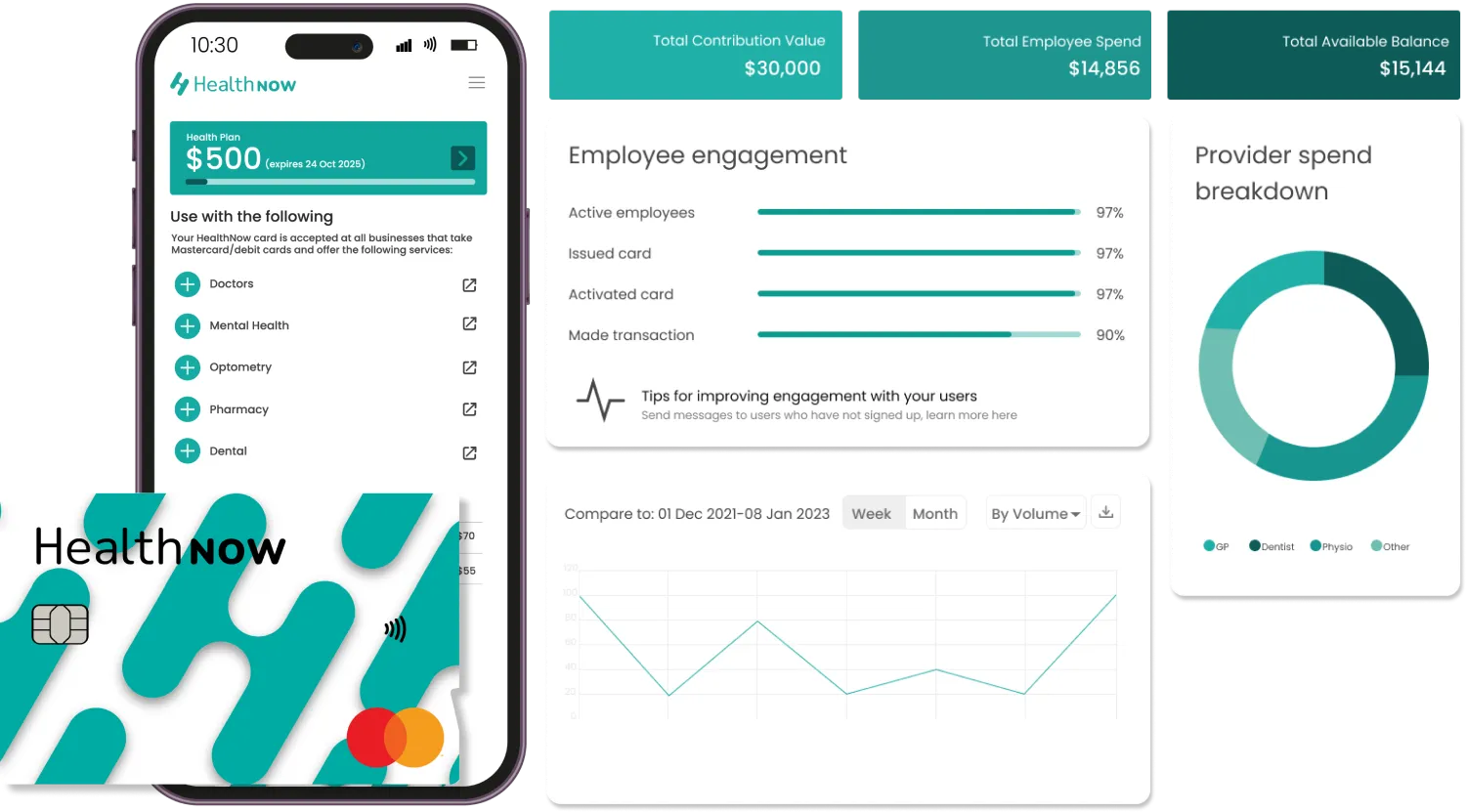After the first wave of COVID lockdowns in 2020, businesses saw the biggest shift towards employees working remotely from home than ever before. Many employers and employees alike experienced firsthand the newfound flexibility of working remotely, while others struggled to adjust.
Today, the debate about which work model is the best for employee productivity, satisfaction and retention continues to go on, with some companies welcoming workers back to the office in full, others abandoning the overheads of office space and embracing complete remote workers, and others finding a compromise with a form of hybrid working.
Like any work model, there are pros and cons to on-site, hybrid and remote work, and the benefits and drawbacks of any given work environment will differ depending on each individual company, and the characteristics of each individual employee. So let’s take a closer look and explore the upsides and downsides of these different work models, and discuss how to best support your workers, whichever model works best for your business and employees.
Onsite Work
Pros
The benefits of onsite work include:
- Fewer distractions from family members, household chores or home leisure activities
- Enhanced interaction, communication and strengthened relationships and rapport among coworkers, with 78% of employees feeling more included when they work at the office
- A more visible organisational culture in terms of leadership, which can improve focus and sense of purpose and direction
- Access to the company’s equipment and facilities
- A more structured routine, which can improve employee productivity and discipline by creating a common experience for all everyone
Cons
The disadvantages of onsite work include:
- Travel and commute times, which can be lengthy, stressful, and costly
- Increased overhead costs for the organisation, which can include real estate, technology, cleaning, equipment, and energy costs
- Increased distraction from coworkers
- A business environment which may not be preferable to the entire workforce, such as those that prefer to work alone, or in silence
Remote Work
Pros
The benefits of remote work include:
- Increased employee engagement and productivity, which can result in tangible bottom-line benefits for the company: 90% of employees report the same, or higher, productivity levels working from home compared to the office
- A boost in job satisfaction, with 57% of workers saying that they prefer to work from home
- The freedom and flexibility to work at a time that works for the worker, who can utilise their strengths to work early in the morning or late at night – whatever suits them best
- No wasted time commuting
- Increased family time and flexibility for parents
- Fewer distractions from colleagues
Cons
The disadvantages of remote work include:
- Social isolation can come at a cost to employees’ emotional and mental health
- Working from home can make it difficult to switch off from work or set healthy boundaries, and some employees may find themselves overworked or even burnt out with around 55% of remote workers working longer hours than those at the office
- Collaboration and communication with coworkers can be difficult when relying on impersonal mediums such as email and zoom, leaving room for misinterpretation and technological glitches
Hybrid Work
Pros
The benefits of hybrid work include:
- Workers are able to enjoy the freedom of working from home or other locations
- When working in the office, they also have the opportunity to interact and build rapport with their colleagues onsite
- Business owners can reduce overhead costs if they reduce their real estate, equipment, or other expenses
Cons
The disadvantages of hybrid work include:
- If some workers choose to, or are required to work more from home and others more onsite, there may be a division between these groups in terms of culture, perceptions of workload, and social connections
- Effective collaboration between these two teams can be difficult, as each side establishes different rhythms and and systems
- Managers who work predominantly offsite or onsite may favour teams that they interact with most often
How Can I Best Support My Employees?
When comparing these three working models, it’s clear to see that there’s no one-size fits all approach. Some of the benefits and drawbacks may also differ depending on the employee – some people exclusively prefer onsite work, while others exclusively prefer offsite work, so it’s worthwhile engaging with your employees to take on their opinions and preferences as well.
Regardless of which model you select for your business, it’s essential that you take proactive steps to engage and retain your workers, by showing them that they’re cared for, valued, and respected. To do this, we recommend:
- Making Time To Connect With Your Employees
It’s important for leaders to connect and build positive rapport and relationships with all of their employees more often, especially hybrid or remote workers. Checking in at weekly one-on-one meetings can enable productive meaningful conversations to take place that discuss both professional and personal development to help workers feel more engaged and motivated. It also helps both employees and employers alike to see each other as human beings beyond their workplace role, fostering greater appreciation for one another.
- Establishing Clear Time Boundaries
With many remote and hybrid employees reporting that they spend longer hours working while at home, it’s important to establish clear and specific time boundary expectations, to prevent them burning out. Online check-in systems can help both remote and hybrid employees see exactly how much they have worked and when it’s time to call it a day, while also bringing accountability and enabling flexibility.
- Support Your Employees’ Mental And Physical Wellbeing
Many workers struggle to prioritise their mental and physical wellbeing, and often report feeling stretched, exhausted, or uninspired. So to prevent sickness, stress or low productivity, show your employees that you’re there to support them, by emphasising your investment in their overall wellbeing with active, tangible steps to help them look after their health now.
Investing in ways for your employees to access support for their mental, physical and emotional health, shows them that you care, while helping them to perform at their best. This way, your employees can truly feel their best, and tap into their full potential.
Meet The Needs Of Today’s Workforce With Healthnow’s Employer Aid
Operating across New Zealand and the US, HealthNow makes supporting your employees’ mental and physical health easy and simple, by welcoming you into their AI-driven platform and international technology that comes with a dedicated health saver’s wallet for employer aid payments.
Employer aid is delivered as a financial contribution to an employees’ dedicated health wallet, which can only be used on health-related services and products both in a reactive and preventative capacity. Simply put, funds are deposited periodically at an interval chosen by the business, with the employee able to see that money sitting in their health wallet in real time – a big benefit over health insurance plan contributions which are not seen, and appear to be ‘lost’ if they’re not claimed upon within the year.
The employee then chooses which services to spend their funds on – whether that’s doctors visits, seeing a physiotherapist early for a niggle instead of waiting for it to become a full-blown injury, or covering the cost of prescriptions or supplements from the pharmacy. Employer aid also recognises that a person’s wellness and productivity is linked to their family too – when family members are unwell, sleep suffers, time off may need to be taken, and worries or intermittent phone calls can disrupt days. This is why employer aid payments can also be used to cover the health costs of direct family members, too.
How To Get On Board With Employer Aid Today
The onboarding process is free and easy – and can be implemented with no additional out-of-pocket costs than what you’re already paying towards their health insurance plans or other wellness measures. Payments to your employee’s health wallets can be automatically made monthly or at a frequency and dollar value that you choose. You can leave your employee’s health wallets open to be used on any health or medical service with HealthNow, or specify the services you’d prefer. The funds can only be spent on health services and products within New Zealand, and can be used for themselves or their family members.
HealthNow provides updates on your impact to help you measure the value of employer aid within your company. Your contributions are not subject to the Fringe Benefits Tax, are free for your employees to use (they even get a free $10 credit with their free sign-up), and HealthNow has an ever-growing trusted network of medical providers to keep your staff healthy and happy.
To get started, register your company’s interest via this contact form and a HealthNow team member will get back to you promptly.







